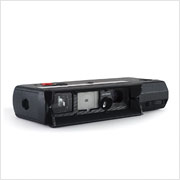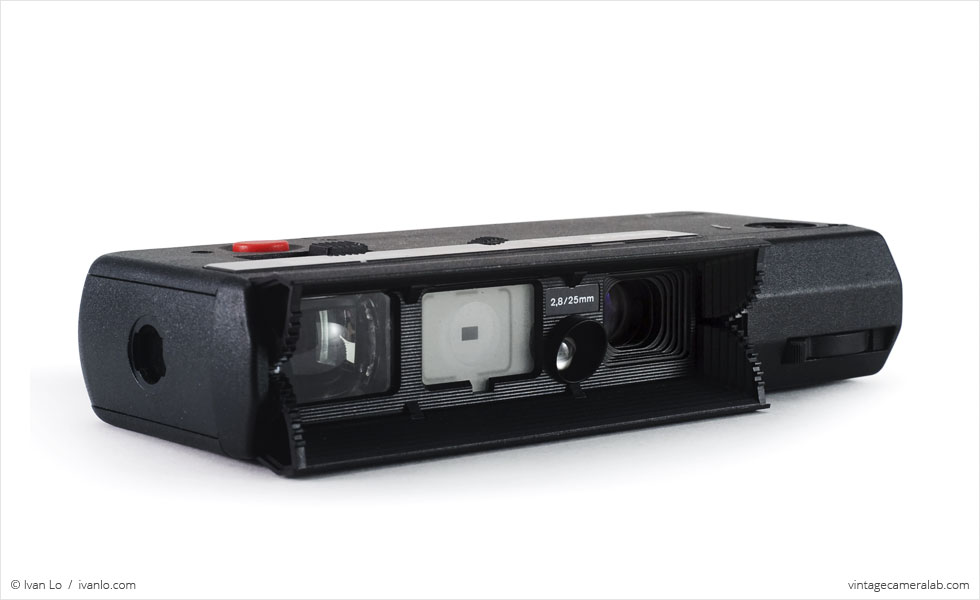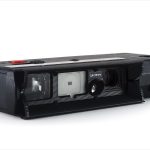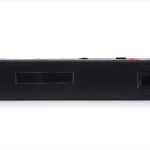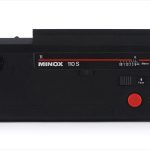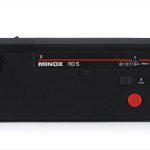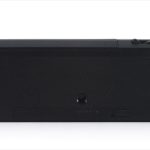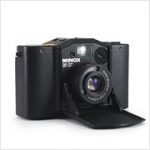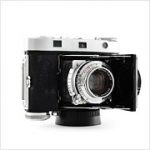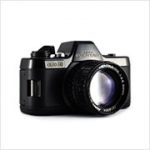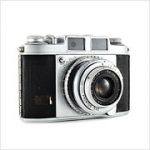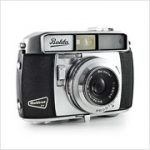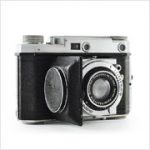Minox 110 S Specifications
| Manufacturer: | Balda Kamera-Werk for |
| Minox GmbH | |
| Origin: | West Germany |
| (modern day Germany) | |
| Made in: | West Germany |
| (modern day Germany) | |
| Introduced: | 1975 |
| Type: | Subminiature, Rangefinder |
| Format: | 110 Film |
| Dimensions: | 13 x 2.7 x 5.4 cm (closed) |
| 13 x 2.8 x 6 cm (open) |
Minox 110 S Overview
The Minox 110 S is a subminiature 110 format camera introduced in 1975. This slim little camera was first presented to the public alongside the revolutionary Minox 35 EL at Photokina 1974 which unfortunately meant that it was pretty much completely overshadowed by its bigger brother. Produced by Balda on behalf of Minox, the 110 S also had an alternate life as the Balda 1000 but with different lenses. In an ocean of inexpensive 110 cameras like Eastman Kodak‘s Pocket Instamatic line, the Minox 110 S is of surprisingly high quality. Despite its plastic construction, there’s nothing about it that feels flimsy or cheap.
Perhaps the most interesting feature of the 110 S is its “French doors.” A sliding switch on the bottom plate (not to be confused with the smaller sliding switch by the tripod socket that opens the film door) opens and closes these doors, revealing a 25mm f/2.8 lens and the camera’s brilliant rangefinder assembly. To the side of the doors is the winding lever which advances the film and cocks the shutter for the next exposure. On the user’s right hand side of the camera is a receiver for a wrist strap while the left side has a socket for an electronic flash unit. As an alternative, there’s a flash cube socket on the camera’s top plate. Also on the top is the aperture selection wheel located just below and to the right of “110 S” with the current aperture displayed in a tiny window above “MINOX.” Moving further to the right is the focus distance indicator which is controlled by the slider below it. A bright shutter button and a threaded cable release socket round out the rest of the top plate’s features.
As far as 110 format cameras go, most of them are dull, cheaply made, and of average quality at best so I’m naturally drawn to oddballs like the Pentax Auto 110, the Rollei A110, Minolta 110 Zoom, and, of course, this Minox 110 S. I really enjoy this camera’s enclosed design, the way the doors pop open, how the aperture and focal distance readouts are integrated into the branding, the fact that they managed to fit a rangefinder assembly inside such a dimunitive body, and how bright and clear the viewfinder is. It’s definitely a world apart from the legendary Minox “spy cameras” of old, but I think it still deserves a bit of recognition.
Find your very own Minox 110 S on eBay.
McKeown, James M. and Joan C. McKeown’s Price Guide to Antique and Classic Cameras, 2001-2002. (Grantsburg, WI, USA: Centennial Photo Service, 2001), p 76-77, 473.
